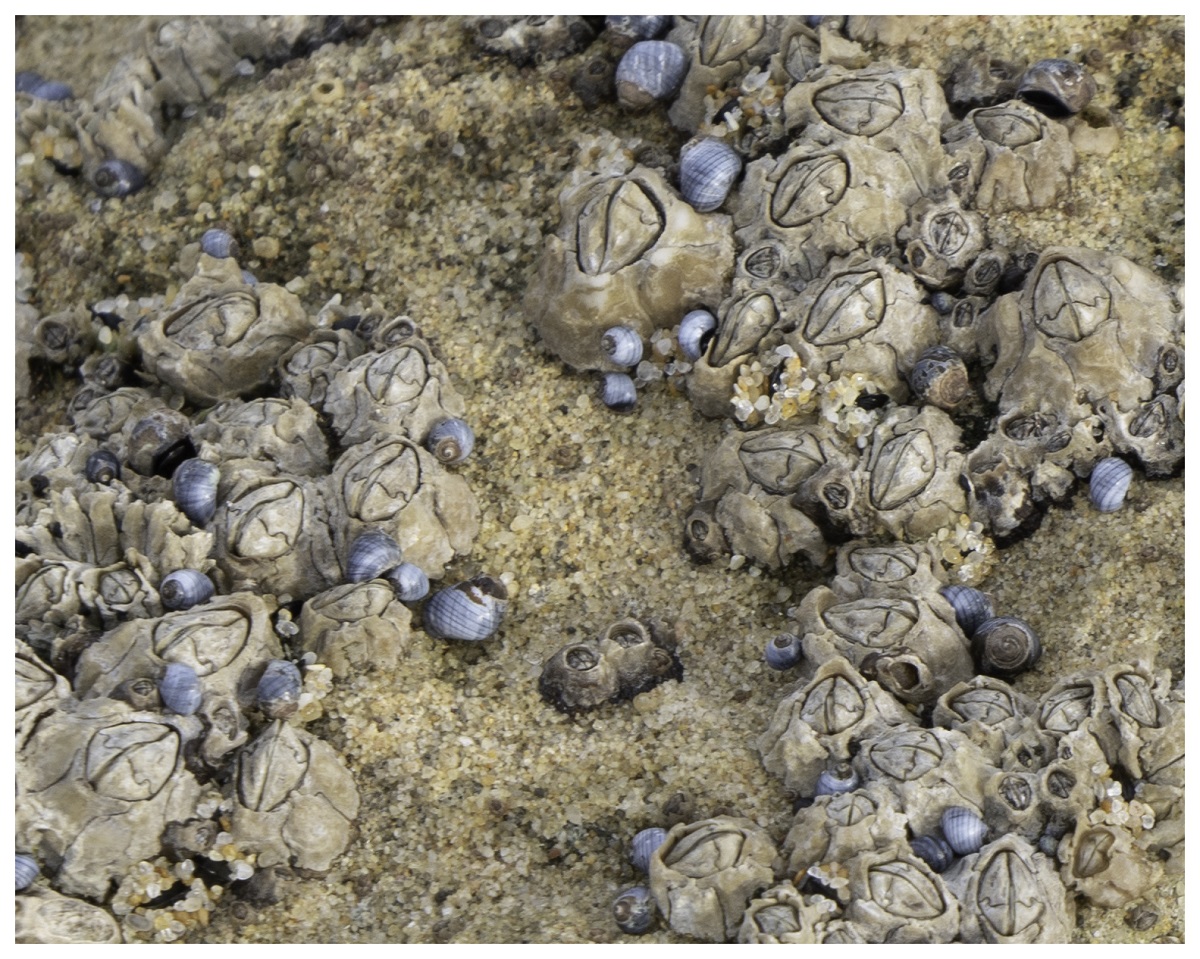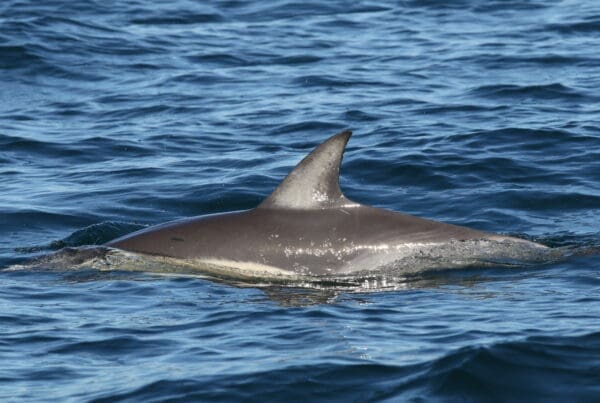Did you guess correctly?
These are barnacles, they are a relative of crabs but look quite different, living inside their volcano-shaped house permanently attached to the rock surface.
Living attached to a rock on the intertidal zone requires careful choice of your location. A good choice means ample food, shelter, minimal time out of the water at low tide, few predators and so on. It is all about location, location, location! Make a good choice and you will grow, mature and reproduce, making a poor choice means you will probably die.
So how do barnacles find that right spot? Barnacles have a stage in their life cycle called a cyprid which is the real estate agent of their life cycle. It has compound eyes and sensitive antennae, neither of which are evident in earlier or later stages of its life. The two antennae are the key to its location hunting. The antennae have adhesive pads that it uses to walk across a surface, while chemical sensors on the antennae assess the merits of each location. The cyprid may spend days or weeks drifting between and testing different locations.
Once it has found “the spot”, it glues its antennae and head to the rock and completes its transformation into an adult. It creates six calcium plates which become the sides of its home and four more that become the doors. This is an ideal structure allowing the barnacles to hold water as the tide falls and seal their doors to prevent dehydration and predation. To feed, the barnacle uses feathery structures called cirri which it pushes out the doors into the current to gather plankton. It also uses the cirri to obtain oxygen from the water.
So how did the cyprid find the ideal location? It is looking for the chemical signature of adult barnacles because if barnacles have survived to become adults, then their location is a good spot to live. So, barnacles settle next to other barnacles, but this does not have to be on the rocky shore.
Barnacles need to glue themselves onto a solid surface which can be a man-made structure like a pier or boat hull, or a living structure like a whale or turtle, or an object drifting in the sea. Once a barnacle establishes itself on the surface, more will follow, limited only by the available space.
Why do barnacles grow on whales? Watch this video below to find the answers.

If you would like to learn more about barnacles and the huge diversity of life that can be found in the shallows along our shorelines please contact Education Director Mandy Robertson on education@dolphinresearch.org.au







